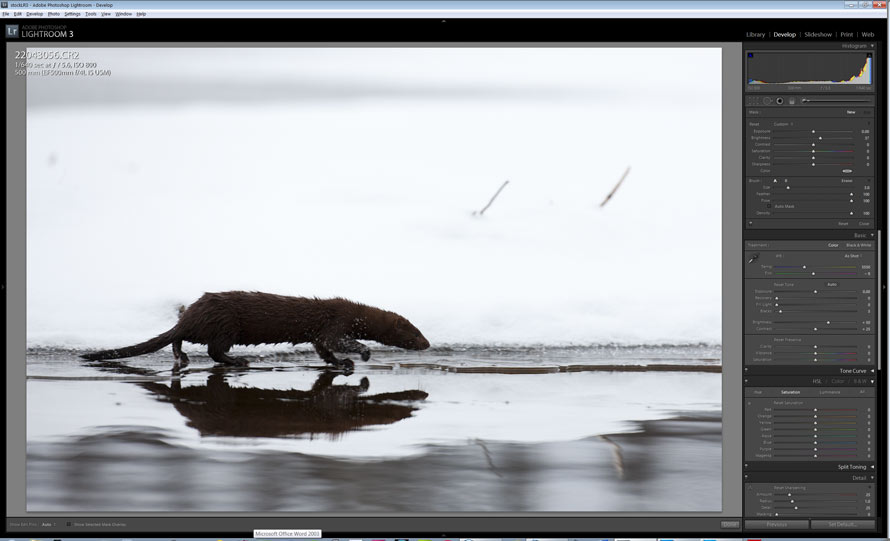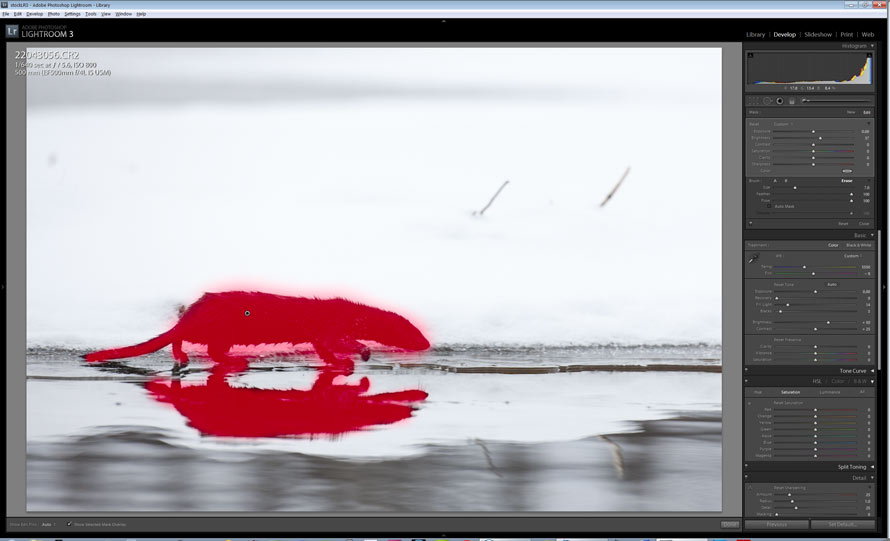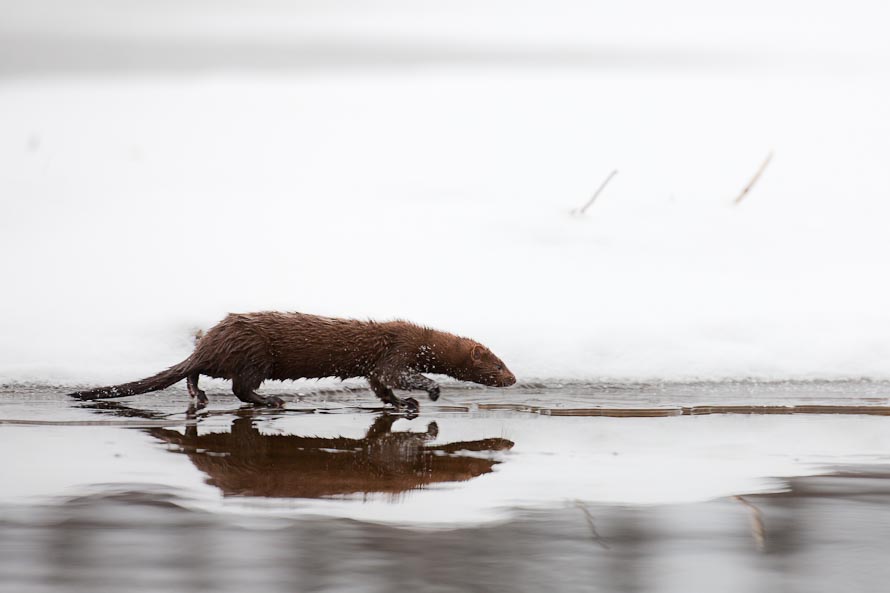Mink
Last week I photographed this mink along a stream in interior Alaska. It was my first series of photos of a mink in the wild, and they are animals that rarely stop moving. While hunting along the bank on the opposite side of the river, the mink suddenly ran on the ice across the stream directly towards the group of us photographing. It then swam through open areas of the ice and dove for fish, which it ate while hiding a cluster of branches. I was caught a bit off guard and had walked to the stream with my 500mm, not really expecting the mink to hang around. I shot the series hand held with my 500mm, and wished for a 1.4x a number of times. It was a tricky exposure since the light was low and the mink was moving fast. That required a high ISO to stop action. In addition, the tonal range of the mink and the background were at opposite ends of the brightness spectrum. So, with the advent of snow in Fairbanks, and the approaching winter which will deliver many photo ops that include the snow, I’ll describe how I expose for such situations. In this case, I prefer manual exposure since the light is not changing and the in camera meter is tricked out by the large areas of white. Because a histogram reveals the tonal values of brightness in an image ranging from pure black to pure white (left to right), one should expect to see graph representation in the histogram on the far right side due to the white snow. I make an exposure which offers enough shutter speed for the subject, then make sure the ISO or aperture is set appropriately. From there, you just shoot away.
The post production treatment of this image in LR3 is pretty basic. Since I could not increase the exposure any more in the original capture without overexposing the snow, I added a slight brightness brush on the dark mink, along with some fill light, to bring up detail in the dark browns. Some minus clarity offers a slightly creamy feel to the image, which sort of fits the movement of the animal.

Original capture. Notice the histogram exposed as far right as possible to reflect the white brightness values of the snow

Slight brightness brush applied in LR3, along with some fill light and minus clarity

Mink hunting along stream, interior, Alaska. Canon 1ds Mark III, 500mm f4/L IS, 1/640 sec @ f/5.6, ISO 800






